Nintendo stands as a titan in the world of video games, renowned for its relentless innovation and cherished intellectual properties (IPs). These IPs have captivated audiences for decades, maintaining their charm and allure over the years. With an exciting lineup of upcoming titles, Nintendo shows no signs of slowing down, especially with the recent announcement of the Nintendo Switch 2. This milestone prompts us to reflect on the storied history of Nintendo's consoles, which have consistently pushed the boundaries of gaming.
Below, we've compiled a comprehensive list of every console Nintendo has released. Embark on a journey through time and witness how Nintendo has shaped the gaming landscape with each innovative leap forward!
*Looking to save on a new Nintendo Switch or new titles for your system? Be sure to check out the best Nintendo deals available today.*
How Many Nintendo Consoles Have There Been?
In total, 32 Nintendo consoles have been released throughout Nintendo's illustrious history. The upcoming Switch 2 will mark the 33rd console. Our list includes both home and handheld revision models, such as those branded XL and Mini.
Latest Model: Nintendo Switch OLED (Neon Blue & Red)

Every Nintendo Console in Order of Release
Color TV-Game - June 1, 1977
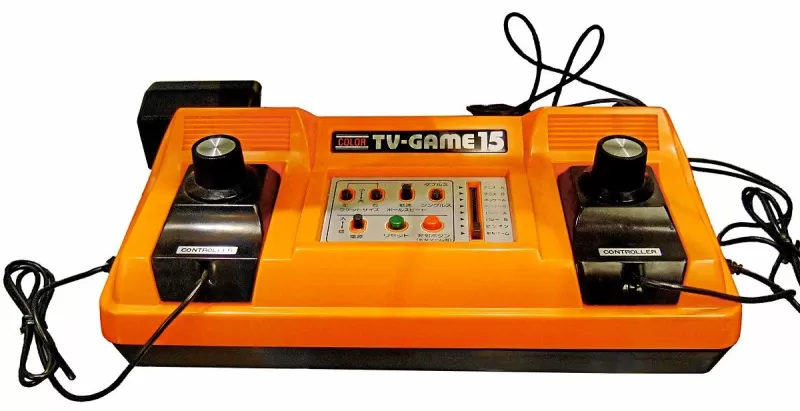 Nintendo's initial venture into gaming hardware, the Color TV-Game series, was a collaboration with Mitsubishi Electronics. This partnership allowed Nintendo to dip its toes into hardware development, leading to a significant success that redirected their focus toward gaming hardware. Nearly 50 years on, the influence of the Color TV-Game remains evident in Nintendo's unwavering commitment to gaming.
Nintendo's initial venture into gaming hardware, the Color TV-Game series, was a collaboration with Mitsubishi Electronics. This partnership allowed Nintendo to dip its toes into hardware development, leading to a significant success that redirected their focus toward gaming hardware. Nearly 50 years on, the influence of the Color TV-Game remains evident in Nintendo's unwavering commitment to gaming.
Game & Watch - April 28, 1980
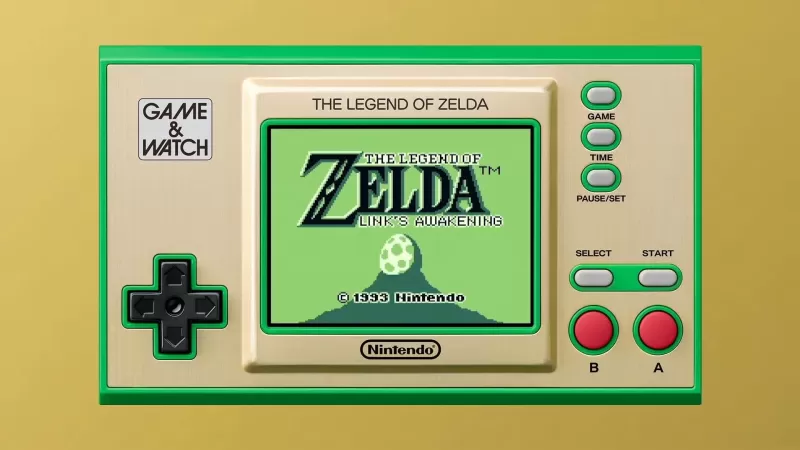 Nintendo's first foray into the handheld market came with the Game & Watch series, each device featuring a unique game. These units sold over 40 million worldwide and introduced innovations like the D-Pad, first seen in the Donkey Kong Game & Watch. Their legacy continues with limited edition releases in 2020 and 2021 to celebrate Mario and Zelda anniversaries.
Nintendo's first foray into the handheld market came with the Game & Watch series, each device featuring a unique game. These units sold over 40 million worldwide and introduced innovations like the D-Pad, first seen in the Donkey Kong Game & Watch. Their legacy continues with limited edition releases in 2020 and 2021 to celebrate Mario and Zelda anniversaries.
Nintendo Entertainment System - October 18, 1985
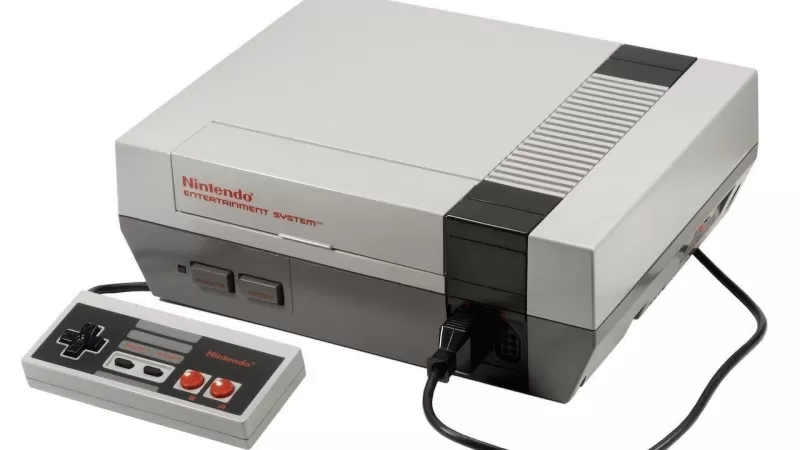 The Nintendo Entertainment System (NES), known as the Family Computer (Famicom) in Japan, marked Nintendo's first home console release in North America. With its cartridge system, the NES allowed players to enjoy a wide variety of games, launching iconic franchises like Super Mario, The Legend of Zelda, and Metroid. It's a cornerstone in video game history, setting the stage for future generations.
The Nintendo Entertainment System (NES), known as the Family Computer (Famicom) in Japan, marked Nintendo's first home console release in North America. With its cartridge system, the NES allowed players to enjoy a wide variety of games, launching iconic franchises like Super Mario, The Legend of Zelda, and Metroid. It's a cornerstone in video game history, setting the stage for future generations.
Game Boy - July 31, 1989
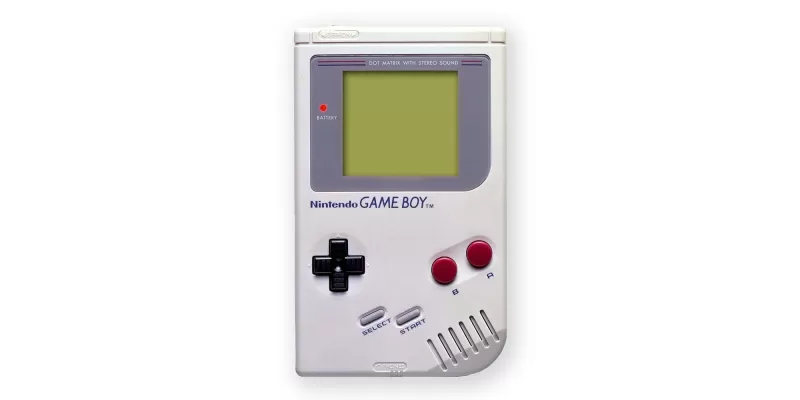 The Game Boy, released in North America in the summer of 1989, revolutionized handheld gaming with its cartridge system, allowing for a diverse library of games. Notably, it came bundled with Tetris in most regions, except Japan, cementing its place in gaming history.
The Game Boy, released in North America in the summer of 1989, revolutionized handheld gaming with its cartridge system, allowing for a diverse library of games. Notably, it came bundled with Tetris in most regions, except Japan, cementing its place in gaming history.
Super Nintendo Entertainment System - August 23, 1991
 The Super Nintendo Entertainment System (SNES) introduced 16-bit graphics to Nintendo's lineup, featuring major evolutions in their flagship series with titles like Super Mario World and Donkey Kong Country. Despite its late entry into the market, the SNES became the best-selling console of its era due to its rich software library and broad appeal.
The Super Nintendo Entertainment System (SNES) introduced 16-bit graphics to Nintendo's lineup, featuring major evolutions in their flagship series with titles like Super Mario World and Donkey Kong Country. Despite its late entry into the market, the SNES became the best-selling console of its era due to its rich software library and broad appeal.
Virtual Boy - August 14, 1995
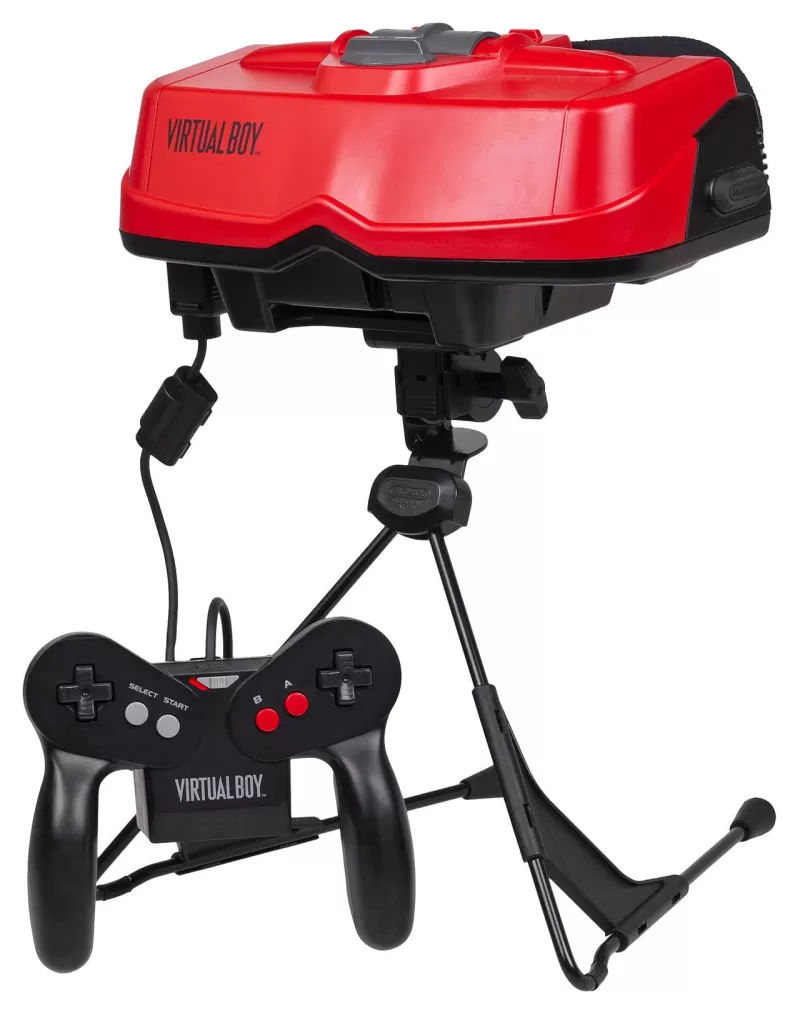 The Virtual Boy stands out as one of Nintendo's most unconventional consoles, offering the first true 3D gaming experience. Though it only saw 22 game releases and sold just under 800,000 units, titles like Mario's Tennis and Virtual Boy Wario Land made their mark.
The Virtual Boy stands out as one of Nintendo's most unconventional consoles, offering the first true 3D gaming experience. Though it only saw 22 game releases and sold just under 800,000 units, titles like Mario's Tennis and Virtual Boy Wario Land made their mark.
Game Boy Pocket - September 3, 1996
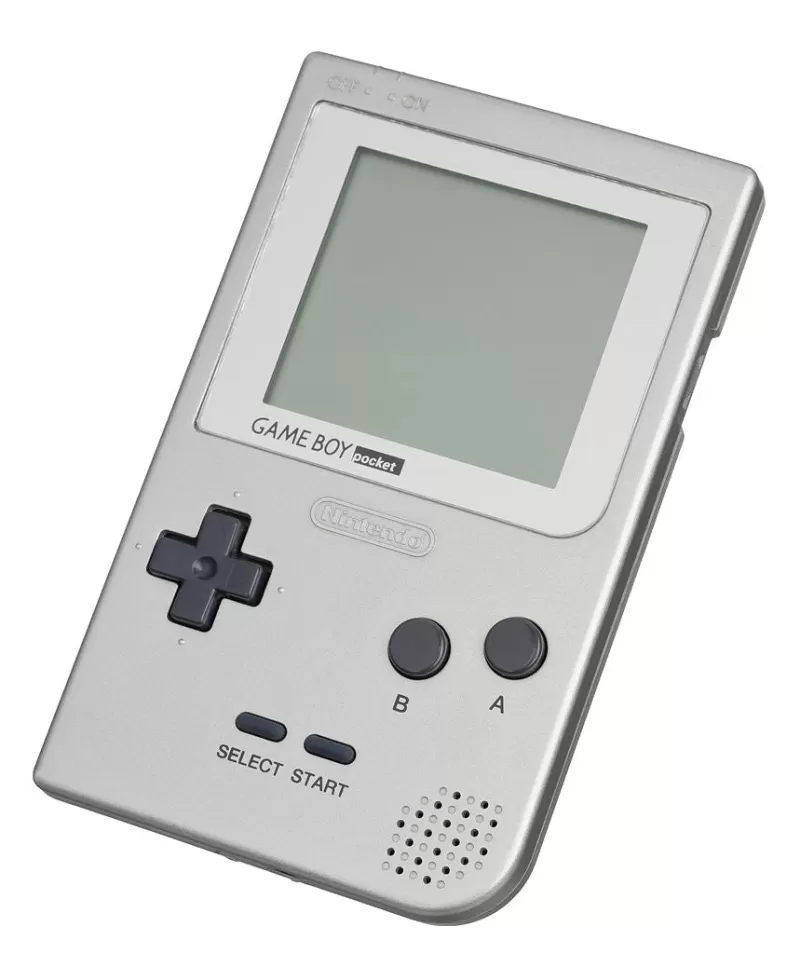 The Game Boy Pocket offered a smaller, sleeker design with a monochrome screen, improving on the original's green-tinted display. Enhanced hardware led to better response times, though the smaller size meant a shorter battery life.
The Game Boy Pocket offered a smaller, sleeker design with a monochrome screen, improving on the original's green-tinted display. Enhanced hardware led to better response times, though the smaller size meant a shorter battery life.
Nintendo 64 - September 29, 1996
 The Nintendo 64 ushered in 3D graphics to Nintendo's home consoles, highlighted by landmark games such as Super Mario 64 and The Legend of Zelda: Ocarina of Time. Its innovative controller introduced the analog stick, and Nintendo released numerous special editions, including translucent variants.
The Nintendo 64 ushered in 3D graphics to Nintendo's home consoles, highlighted by landmark games such as Super Mario 64 and The Legend of Zelda: Ocarina of Time. Its innovative controller introduced the analog stick, and Nintendo released numerous special editions, including translucent variants.
Game Boy Light - April 14, 1998
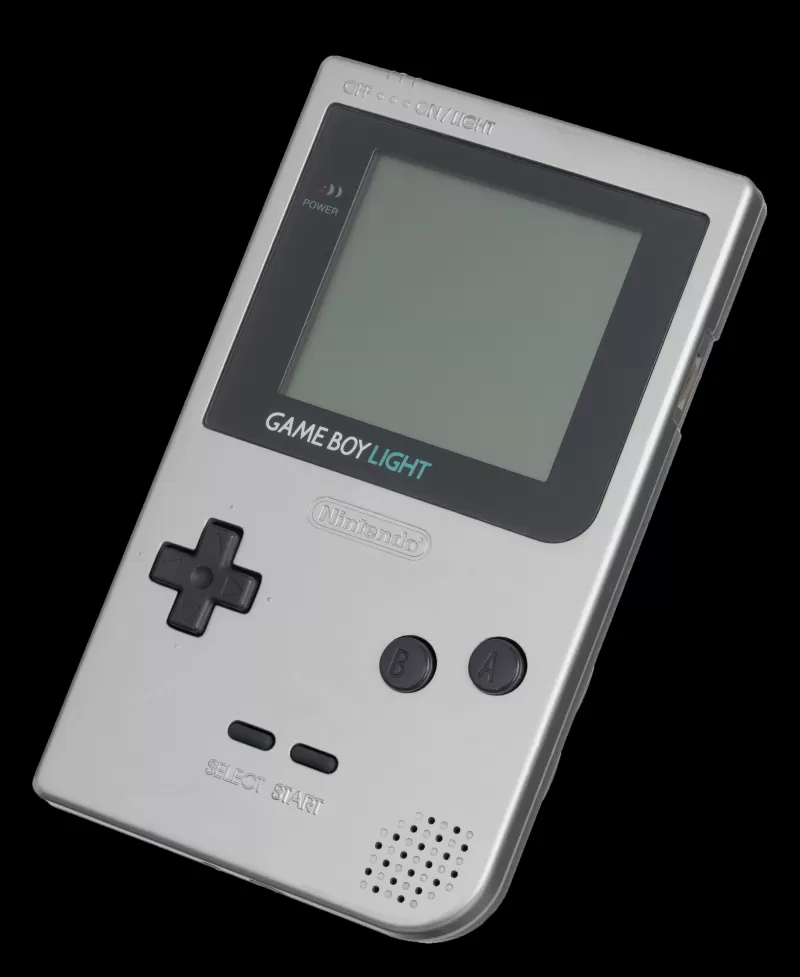 Exclusive to Japan, the Game Boy Light was larger than the Game Boy Pocket but featured a backlight for enhanced visibility in low-light conditions. It also boasted a longer battery life of around 20 hours.
Exclusive to Japan, the Game Boy Light was larger than the Game Boy Pocket but featured a backlight for enhanced visibility in low-light conditions. It also boasted a longer battery life of around 20 hours.
Game Boy Color - November 18, 1998
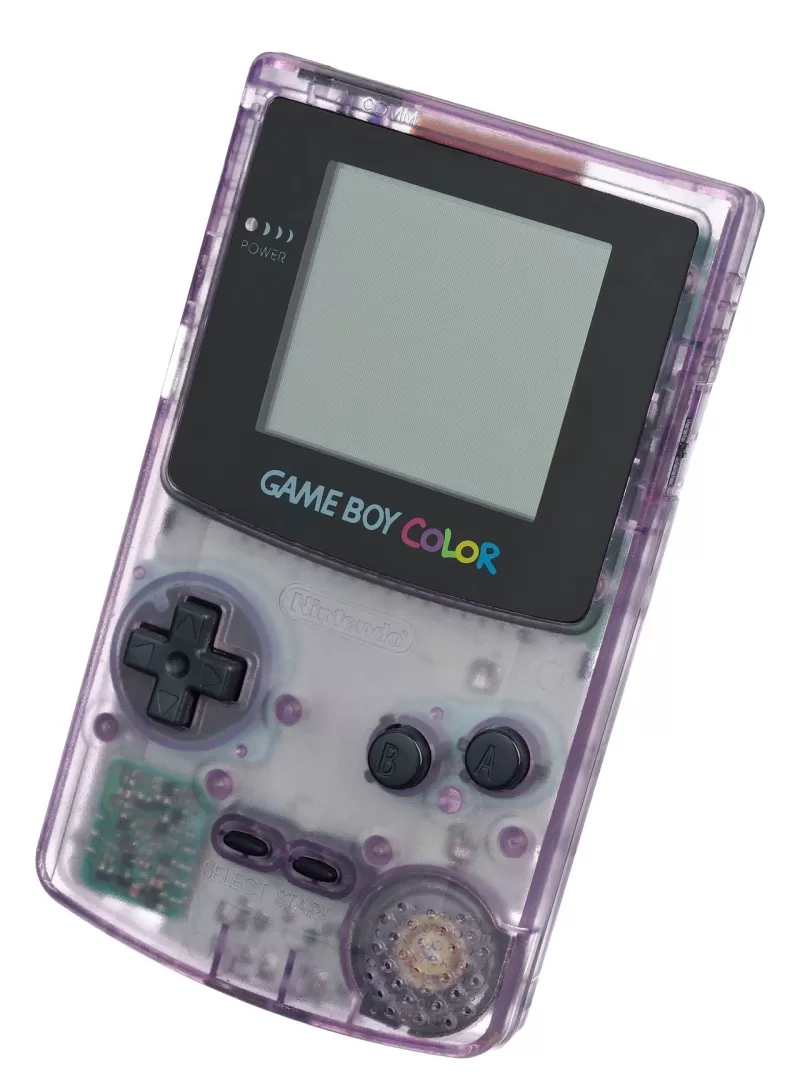 The Game Boy Color introduced color to Nintendo's handhelds, maintaining backward compatibility with the original Game Boy games. It revitalized classics like Tetris with vibrant colors and launched hundreds of new games designed for its enhanced capabilities.
The Game Boy Color introduced color to Nintendo's handhelds, maintaining backward compatibility with the original Game Boy games. It revitalized classics like Tetris with vibrant colors and launched hundreds of new games designed for its enhanced capabilities.
Game Boy Advance - June 11, 2001
 The Game Boy Advance (GBA) marked a significant technological advancement, adopting a horizontal design and offering 16-bit graphics. Backward compatibility with Game Boy and Game Boy Color games expanded the library to thousands of titles.
The Game Boy Advance (GBA) marked a significant technological advancement, adopting a horizontal design and offering 16-bit graphics. Backward compatibility with Game Boy and Game Boy Color games expanded the library to thousands of titles.
Pokémon mini - November 16, 2001
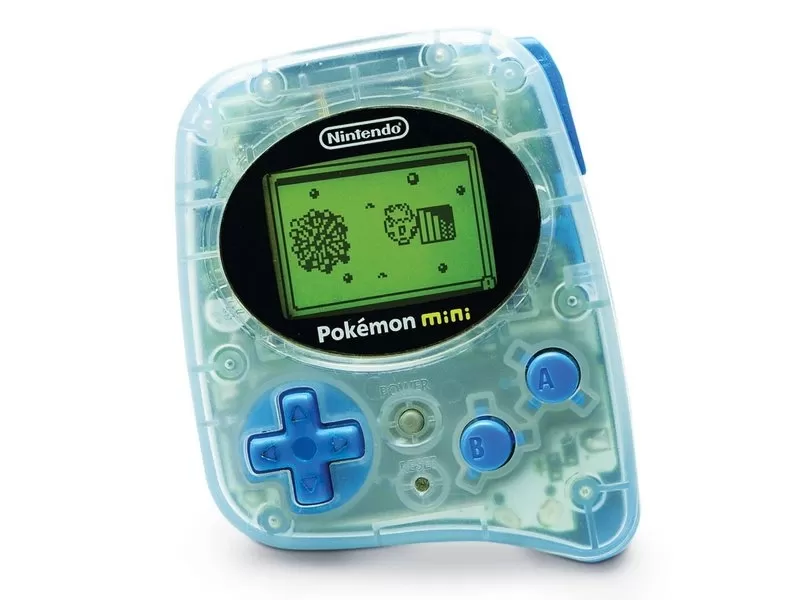
Nintendo GameCube - November 18, 2001
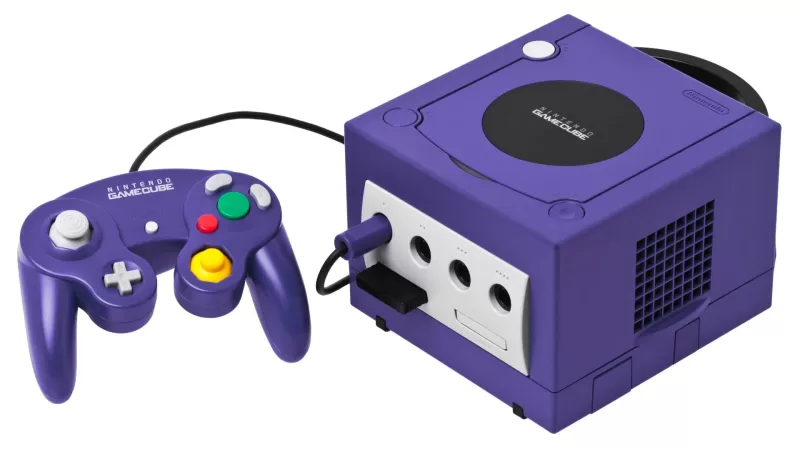 The GameCube continued the legacy of the Nintendo 64 with sequels like Super Mario Sunshine and The Legend of Zelda: Wind Waker. Its shift to disc-based media and improved controller design, including built-in rumble and analog/digital triggers, left a lasting impact, seen in the continued popularity of franchises like Animal Crossing.
The GameCube continued the legacy of the Nintendo 64 with sequels like Super Mario Sunshine and The Legend of Zelda: Wind Waker. Its shift to disc-based media and improved controller design, including built-in rumble and analog/digital triggers, left a lasting impact, seen in the continued popularity of franchises like Animal Crossing.
Panasonic Q - December 14, 2001
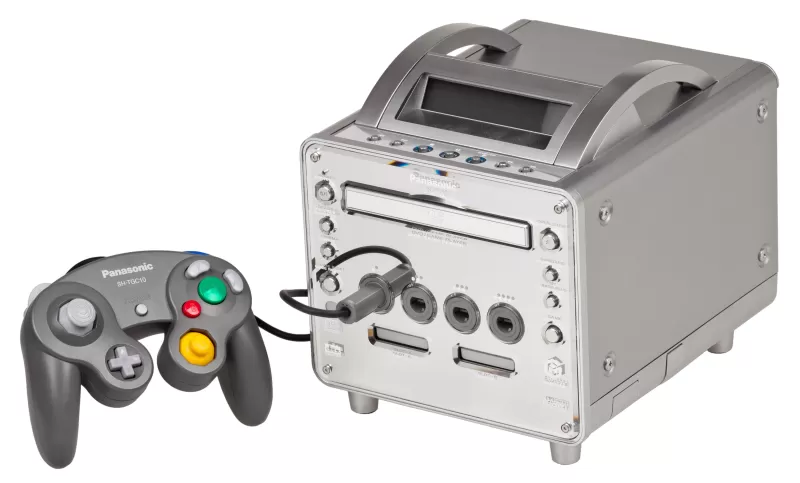 The Panasonic Q, a collaboration between Panasonic and Nintendo, combined a GameCube with a DVD player, featuring a sleek stainless steel design. Despite its innovative approach, high costs and low sales limited its market life to two years.
The Panasonic Q, a collaboration between Panasonic and Nintendo, combined a GameCube with a DVD player, featuring a sleek stainless steel design. Despite its innovative approach, high costs and low sales limited its market life to two years.
Game Boy Advance SP - March 23, 2003
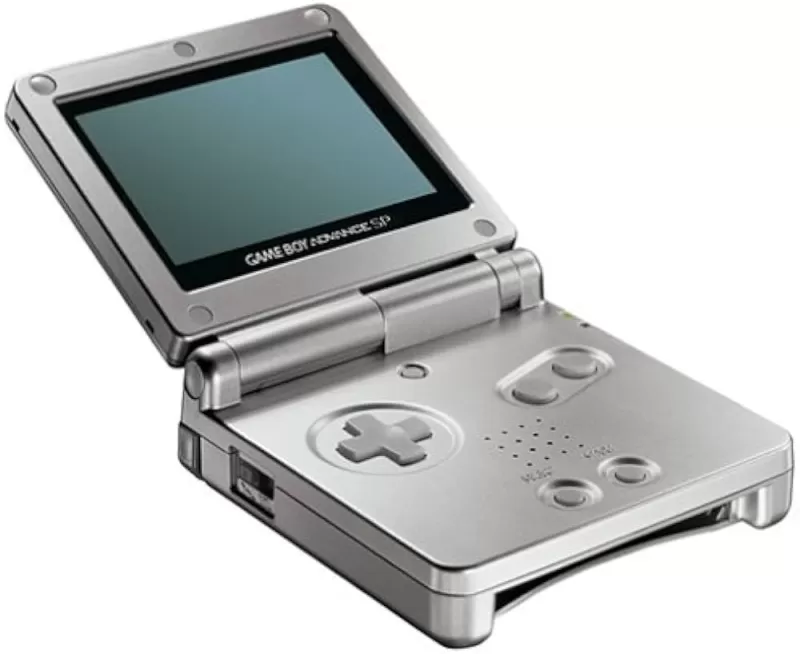 The Game Boy Advance SP (GBA SP) introduced a hinge design with the screen on the top and controls below, along with a rechargeable battery and a backlit screen in later models. The omission of a headphone jack was offset by an adapter for audio playback.
The Game Boy Advance SP (GBA SP) introduced a hinge design with the screen on the top and controls below, along with a rechargeable battery and a backlit screen in later models. The omission of a headphone jack was offset by an adapter for audio playback.
Nintendo DS - November 21, 2004
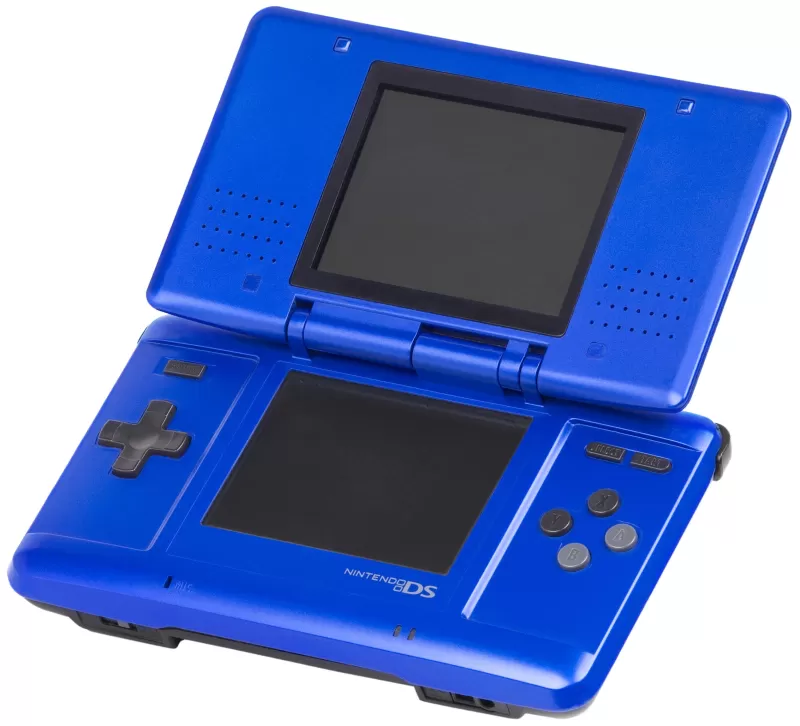 The Nintendo DS, the first in its line, became Nintendo's best-selling console thanks to its innovative dual-screen design and Wi-Fi support. Its touchscreen and stylus pen opened new gameplay possibilities, distinguishing it from competitors.
The Nintendo DS, the first in its line, became Nintendo's best-selling console thanks to its innovative dual-screen design and Wi-Fi support. Its touchscreen and stylus pen opened new gameplay possibilities, distinguishing it from competitors.
Game Boy Micro - September 19, 2005
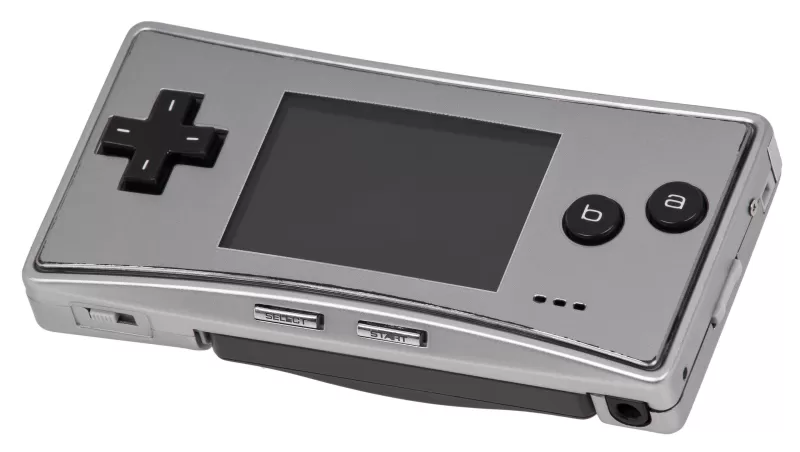 Revealed at E3 2005, the Game Boy Micro's compact size amazed audiences. Backward compatible with Game Boy and Game Boy Color games, it featured a backlit screen with adjustable brightness. It sold 2.42 million units over 18 months.
Revealed at E3 2005, the Game Boy Micro's compact size amazed audiences. Backward compatible with Game Boy and Game Boy Color games, it featured a backlit screen with adjustable brightness. It sold 2.42 million units over 18 months.
Nintendo DS Lite - June 11, 2006
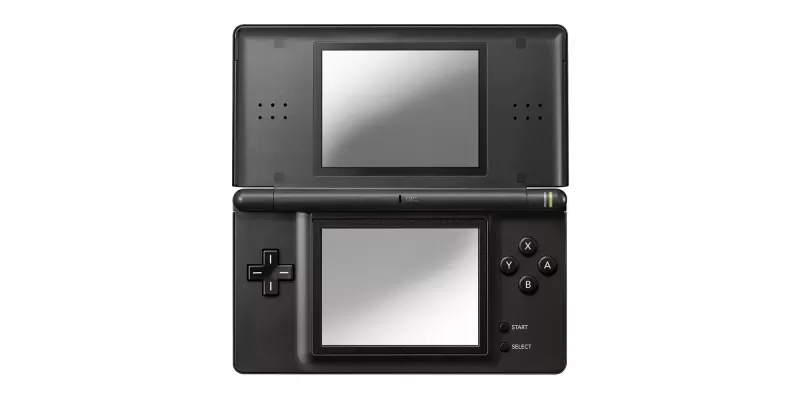 The Nintendo DS Lite, a slimmer and lighter version of the DS, offered brighter screens and improved battery life, enhancing the gaming experience in various lighting conditions.
The Nintendo DS Lite, a slimmer and lighter version of the DS, offered brighter screens and improved battery life, enhancing the gaming experience in various lighting conditions.
Nintendo Wii - November 19, 2006
 The Nintendo Wii revitalized Nintendo's home console market with its motion control technology. The Wii Remote and accessories like the Nunchuk and Wii MotionPlus provided unique gameplay experiences. Backward compatibility with GameCube and the Virtual Console service added to its appeal.
The Nintendo Wii revitalized Nintendo's home console market with its motion control technology. The Wii Remote and accessories like the Nunchuk and Wii MotionPlus provided unique gameplay experiences. Backward compatibility with GameCube and the Virtual Console service added to its appeal.
Nintendo DSi - November 1, 2008
 The Nintendo DSi introduced cameras and an SD card slot, but removed the Game Boy Advance slot. These changes offered new ways to interact with games and store data.
The Nintendo DSi introduced cameras and an SD card slot, but removed the Game Boy Advance slot. These changes offered new ways to interact with games and store data.
Nintendo DSi XL - November 21, 2009
 The larger DSi XL model featured wider screens and improved speakers, enhancing the gaming experience. Its larger battery allowed for extended playtime.
The larger DSi XL model featured wider screens and improved speakers, enhancing the gaming experience. Its larger battery allowed for extended playtime.
Nintendo 3DS - March 27, 2011
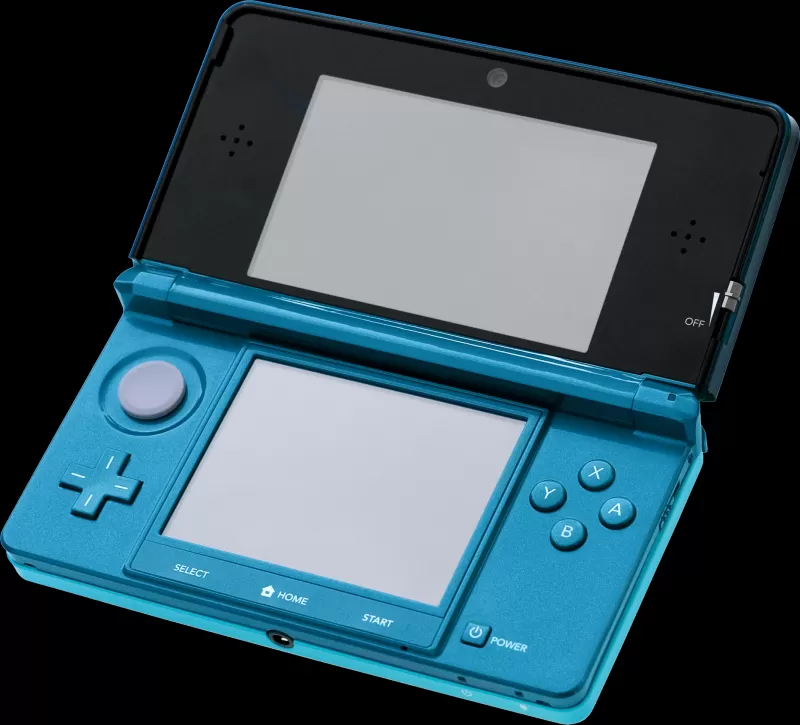 The Nintendo 3DS succeeded the DS line with stereoscopic 3D capabilities, no glasses required. Its impressive library included titles like The Legend of Zelda: A Link Between Worlds and Super Mario 3D Land.
The Nintendo 3DS succeeded the DS line with stereoscopic 3D capabilities, no glasses required. Its impressive library included titles like The Legend of Zelda: A Link Between Worlds and Super Mario 3D Land.
Nintendo 3DS XL - August 19, 2012
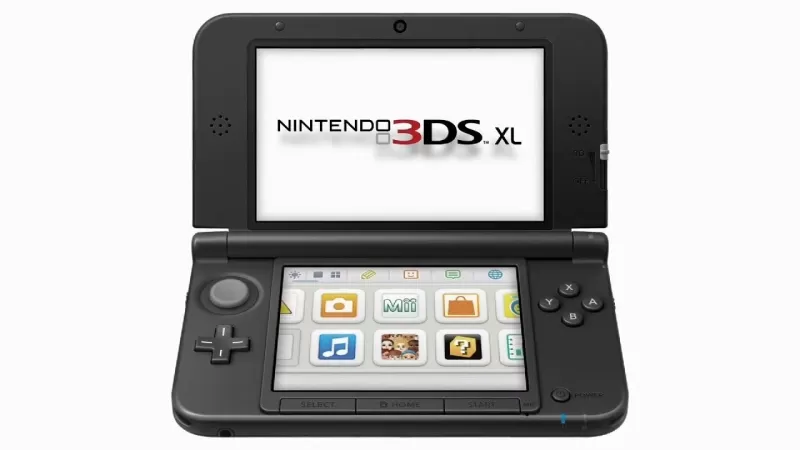 The 3DS XL offered a screen 90% larger than the original, maintaining all features while enhancing visibility and immersion.
The 3DS XL offered a screen 90% larger than the original, maintaining all features while enhancing visibility and immersion.
Nintendo Wii U - November 18, 2012
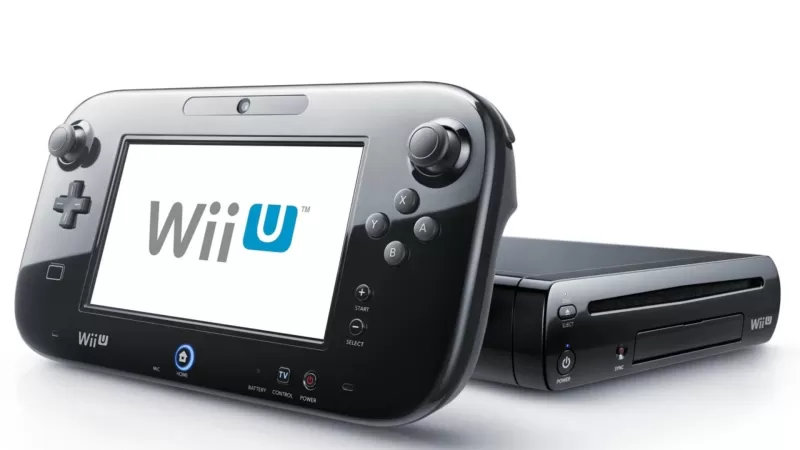 The Wii U, with its innovative GamePad controller, allowed off-TV play and supported HD graphics. Despite great titles like Super Mario 3D World and Splatoon, poor marketing and confusion hindered its success.
The Wii U, with its innovative GamePad controller, allowed off-TV play and supported HD graphics. Despite great titles like Super Mario 3D World and Splatoon, poor marketing and confusion hindered its success.
Nintendo Wii Mini - December 7, 2012
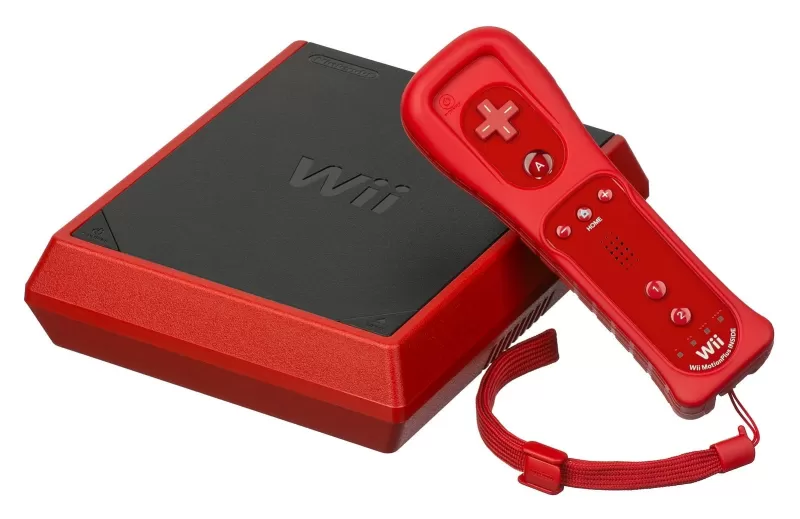 The Wii Mini, a smaller and lighter version of the Wii, launched at the end of its lifecycle. It removed several features, including GameCube support and Wi-Fi connectivity.
The Wii Mini, a smaller and lighter version of the Wii, launched at the end of its lifecycle. It removed several features, including GameCube support and Wi-Fi connectivity.
Nintendo 2DS - October 12, 2013
 The Nintendo 2DS offered 2D gaming without the 3D capability of the 3DS, at a lower price point. While it sacrificed sound quality, it remained fully compatible with 3DS games.
The Nintendo 2DS offered 2D gaming without the 3D capability of the 3DS, at a lower price point. While it sacrificed sound quality, it remained fully compatible with 3DS games.
New Nintendo 3DS - October 11, 2014
 The New Nintendo 3DS added new controls like the C-Stick and ZR/ZL buttons, along with NFC support for amiibo. Its staggered release saw North America receiving it later than other regions.
The New Nintendo 3DS added new controls like the C-Stick and ZR/ZL buttons, along with NFC support for amiibo. Its staggered release saw North America receiving it later than other regions.
New Nintendo 3DS XL - February 13, 2015
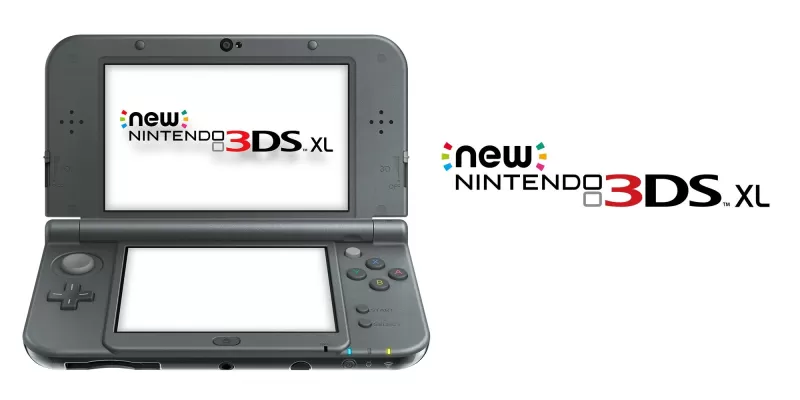 The New 3DS XL, with even larger screens than its standard counterpart, removed the ability to change face plates but offered multiple special editions.
The New 3DS XL, with even larger screens than its standard counterpart, removed the ability to change face plates but offered multiple special editions.
Nintendo Switch - March 3, 2017
 The Nintendo Switch merged home and portable gaming seamlessly, allowing players to enjoy console-quality games on the go. Its stellar first-party library and special editions have solidified its place at the top of the industry.
The Nintendo Switch merged home and portable gaming seamlessly, allowing players to enjoy console-quality games on the go. Its stellar first-party library and special editions have solidified its place at the top of the industry.
New Nintendo 2DS XL - July 28, 2017
 The New Nintendo 2DS XL upgraded the 2DS with an analog stick, shoulder buttons, and amiibo support, returning to the clamshell design and allowing play of New 3DS titles.
The New Nintendo 2DS XL upgraded the 2DS with an analog stick, shoulder buttons, and amiibo support, returning to the clamshell design and allowing play of New 3DS titles.
Nintendo Switch Lite - September 20, 2019
 The Switch Lite, with its smaller 5.5-inch LCD screen and built-in controllers, is exclusively for handheld play. Its reduced cost made it an attractive option for gamers.
The Switch Lite, with its smaller 5.5-inch LCD screen and built-in controllers, is exclusively for handheld play. Its reduced cost made it an attractive option for gamers.
Nintendo Switch OLED model - October 8, 2021
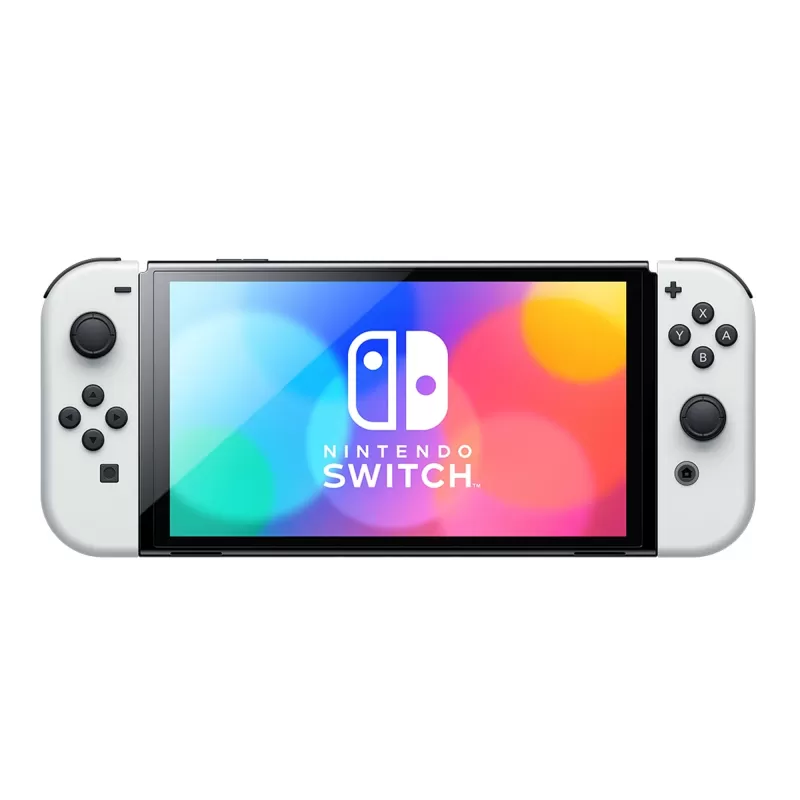 The Switch OLED model upgraded the screen size to 7 inches and introduced an OLED panel, alongside improved speakers and a new kickstand. It also came with a new dock featuring rounded corners and a LAN port.
The Switch OLED model upgraded the screen size to 7 inches and introduced an OLED panel, alongside improved speakers and a new kickstand. It also came with a new dock featuring rounded corners and a LAN port.
Upcoming Nintendo Consoles
After numerous leaks and rumors, Nintendo officially unveiled the Nintendo Switch 2. The reveal showcased a new way to attach Joy-Cons, a larger screen, and a second USB-C port. The Joy-Con can now function as a mouse, which might be integrated into new games. A new Mario Kart with 24-player support was teased, and the console promises "mostly" backward compatibility with support for both physical and digital games.
Analysts estimate the Switch 2 might cost around $400. We've gathered all the details from the trailer, but more information, including a release date, will be shared during a Nintendo Direct scheduled for April 2.







